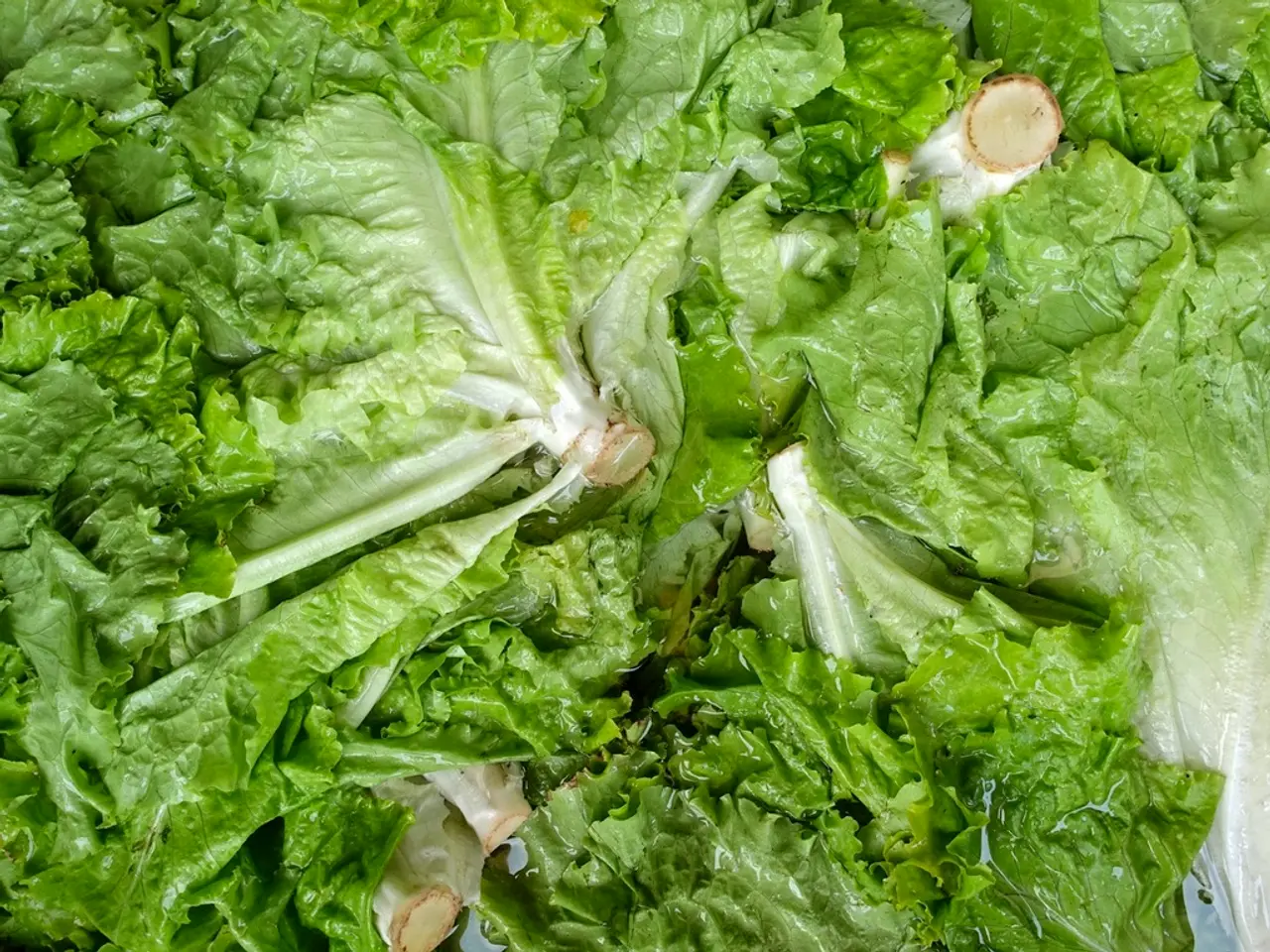Guide on Cultivating Lettuce in Water: Streamlined Hydroponic Farming
Growing lettuce in water, using hydroponic systems, is a simple and efficient way to enjoy fresh greens without the need for a traditional garden space. This method bypasses uncertainties of soil quality and provides plants with protection from soil-borne pests and diseases.
Regrowing Lettuce from Scraps
Regrowing lettuce from scraps is possible by placing the base in a shallow dish with about 1/2 inch of water. With proper care, you can enjoy a fresh harvest from your kitchen waste.
Hydroponic Systems for Lettuce Growth
The best hydroponic systems for growing lettuce include the Nutrient Film Technique (NFT), Deep Water Culture (DWC), drip irrigation systems, and hydroponic tower setups. These systems provide efficient nutrient delivery, oxygenation, and good root environment ideal for lettuce growth.
Nutrient Film Technique (NFT)
The Nutrient Film Technique (NFT) is a popular choice due to its constant nutrient film benefits for fast-growing lettuce roots.
Deep Water Culture (DWC)
Deep Water Culture (DWC) is another favoured system, as it allows roots to grow suspended in an oxygen-rich nutrient solution, promoting rapid growth.
Drip Irrigation System
Drip irrigation systems are efficient, delivering water and nutrients directly to the roots.
Hydroponic Tower
Hydroponic tower setups are space-efficient, making them suitable for limited spaces.
Recommended Growing Conditions
Lettuce thrives in a stable, mild temperature (18-24°C or 65-75°F) and moderate light. For ideal growth, use full-spectrum LED grow lights with balanced blue, red, and green light.
pH and Electrical Conductivity (EC)
Maintaining the pH range between 5.5 to 6.5 and Electrical Conductivity (EC) between 1.5 to 2.5 mS/cm is crucial to optimize nutrient availability and uptake.
Water Temperature
Water temperature should be maintained between 18-24°C (65-75°F) to support optimal nutrient absorption and root health.
Air Oxygenation
Maintain dissolved oxygen via aeration or water circulation to promote healthy roots and prevent pathogens.
Nutrient Solutions
A balanced mix rich in nitrogen (N), phosphorus (P), potassium (K), and appropriate micronutrients, regularly monitored and adjusted every 1-2 weeks, is essential for successful hydroponic lettuce cultivation.
Light Conditions
Use full-spectrum LED grow lights with balanced blue, red, and green light to enhance growth, flavor, and yield.
Temperature Range
Ideal ambient temperature should be between 15°C and 20°C (59°F to 68°F) for lettuce growth.
CO2 Supplementation
Optional but can improve growth rate and yield, maintaining CO2 at 1000-1500 ppm if used.
Lettuce Varieties
Lettuce varieties such as Romaine, Butterhead, and Iceberg have different cultivation needs. Romaine lettuce, like the 'Green Forest' variety, is top-notch for its crisp texture and is a darling of indoor water gardens. Butterhead lettuce brings tenderness to the table, while Iceberg is the go-to for that classic crunch.
Aquaponics
Aquaponics is a symbiotic system that combines hydroponics with aquaculture, allowing the growth of water lettuce alongside koi and goldfish. The fish provide a natural source of nitrogen, resulting in a deliciously green and leafy lettuce.
Water and Nutrient Monitoring
Water and nutrient monitoring is crucial. Regularly test and maintain pH and EC, change nutrient solutions every 1–2 weeks or when imbalances occur, and control water temperature to avoid stress.
In summary, NFT and DWC systems are commonly preferred for their simplicity and effectiveness with lettuce, supported by careful control of pH, EC, temperature, nutrient levels, and light. Consistent monitoring and adjustment of nutrient solutions combined with good environmental control yield the best hydroponic lettuce crops.
This synthesis derives from current expert recommendations and practical guidelines for sustainable and productive hydroponic lettuce farming. Hydroponic systems can use up to 90% less water than soil-based agriculture for lettuce production, making them an eco-friendly choice for fresh greens.
Sources:
[1] Greenhouse Management. (2021). Hydroponic Lettuce Production. Retrieved from https://www.greenhousemg.com/articles/hydroponic-lettuce-production/
[2] Hydroponics.net. (2021). Hydroponic Lettuce. Retrieved from https://www.hydroponics.net/hydroponic-lettuce/
[3] Advanced Nutrients. (2021). Growing Lettuce Hydroponically. Retrieved from https://www.advancednutrients.com/growing-lettuce-hydroponically/
[4] Hydroponics World. (2021). Hydroponic Lettuce. Retrieved from https://hydroponicsworld.com/hydroponic-lettuce/
[5] The Spruce. (2021). How to Grow Lettuce Hydroponically. Retrieved from https://www.thespruce.com/how-to-grow-lettuce-hydroponically-3164372
For more gardening tips and advice, follow Larry Meyers, a gardening expert with over 10 years of experience, who has recently posted about when to plant tulips in Missouri, snail bait safety for dogs, and when to plant pumpkins in Michigan for Halloween.
Maintaining a hydroponic lifestyle seems appealing, as it provides multiple benefits for growing lettuce, such as the use of home-and-garden systems like NFT, DWC, drip irrigation, and hydroponic towers. Additionally, when it comes to enjoying a variety of lettuce, one might consider growing popular choices like Romaine, Butterhead, or Iceberg, each with distinctive qualities suited for different growing environments.





